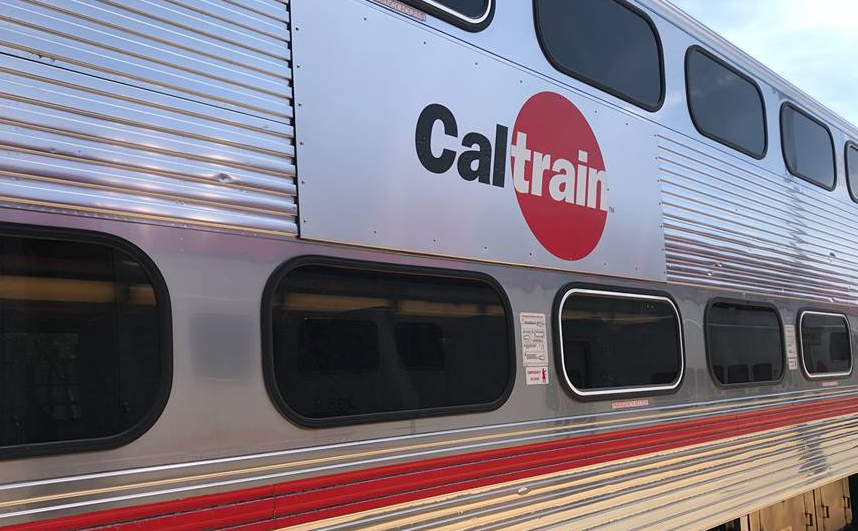With Caltrain ridership expected to grow substantially in the next 20 years, the transit agency is envisioning faster, more frequent service in the coming years. One ambitious plan would run up to 12 trains per hour during peak hours, as opposed to the existing five, effectively reducing the amount of minutes passengers wait for their train to single digits.
In a live town hall aired on YouTube Monday afternoon, Caltrain laid out its vision for the next two decades.
Caltrain serves 65,000 passengers on average per day, up from 36,000 per day in 2010. Caltrain suggested plans Monday that prepares for daily capacity to increase to 180,000 riders per day by 2040.
During its nearly two-hour presentation, Caltrain staff discussed the wide-range of service changes that could be necessary to support population and job growth along the corridor.
Included in its service vision is the ongoing work to electrify the Caltrain, which the organization hopes to have complete by 2022 and which they say will improve speed and reliability along the line while reducing greenhouse gas emissions that currently come from its diesel-powered locomotives.
Caltrain presented three potential ridership scenarios during their event, and the costs and infrastructure changes required to meet each of the three:
- In its ‘baseline’ level, Caltrain would need to invest more than $22 billion by 2040 to meet demand, though this would lead to spotty service at many stations – including maximum waits of more than 20 minutes at some stations even during busy periods. It would feature six Caltrains per hour per direction during peak hours, dropping to three per hour in the off-peak times. This would also require additional tracks at the existing Millbrae station to expand its role as a connector to San Francisco International Airport and BART.
- The ‘moderate growth’ scenario would significantly cut down wait times through increased service at every station on the line, with eight trains per hour in each direction at peak times and six per hour in off-peak times – including later evenings and weekends. This proposal would require more infrastructure investments, up to $25.3 billion and significantly more track expansions – or ‘passing tracks’ – in five places along the line. That would include somewhere between Hayward Park and Hillsdale as well as in Redwood City. This moderate growth scenario is what Caltrain’s staff suggests it the best course of action and is what it will advise the Caltrain Board of Directors to adopt in coming months.
- A ‘high growth’ option would reduce wait times during peak times to single-digit minute waits with 12 trans per hour in each direction at peak times and six trains in off-peak hours. This significant expansion in service would require the most funding – $30 billion – and the most new ‘passing track’ expansions along the line.
Each of the scenarios envisions all-day service from San Francisco all the way to Gilroy, which currently exists only during peak hours. Among the infrastructure investments that will also be necessary are places where roads cross the rail line, which exists in a number of places along the line. Updating these crossings to improve traffic flow and safety – either by under or overpass – is already ongoing or planned in many cities along the Peninsula.
This service vision presentation also incorporates a number of other rail projects in the planning phase around the Bay Area, including a second Transbay BART tunnel, a potential return of service on the Dumbarton Rail corridor, and the arrival of High Speed Rail in the next decade.
For more information about Caltrain’s plans, visit their plan-specific website here. To get involved, sign up for updates from Caltrain, or see a calendar of future events, click here.
EDITOR’S NOTE: Climate Magazine’s publisher provides communication services to Caltrain and SamTrans






